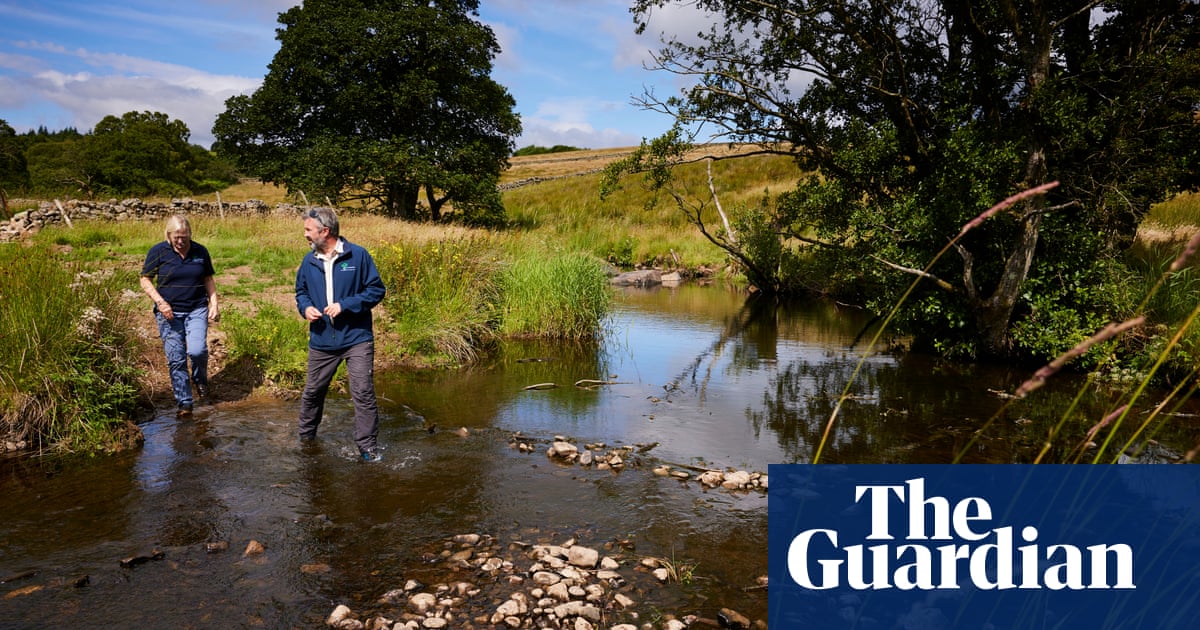
ust over five miles from where the Robert E Lee monument still stands is the formerly segregated East End cemetery, where African Americans who lived through the Reconstruction and Jim Crow eras are buried, many in unmarked graves.
For a century, the Lee monument – commemorating those who upheld slavery – stood tall, polished and revered. It took the murder of George Floyd and subsequent Black Lives Matter protests for politicians to seriously consider tearing it down. Meanwhile, the gravestones in East End for those people most affected by slavery’s legacy are faded, broken or lost to wildly overgrown weeds that make it impossible for family to even visit.
Brad J Bennett and Chris Haley’s 40-minute film Unmarked is about how these memorials are yet another manifestation of history’s injustice. The documentary features the archivists, archaeologists, volunteers and descendants who are searching for and restoring African American cemeteries and burial sites like East End or Sweet Briar plantation. Their efforts are a reclamation of the histories that have been buried and neglected by a dominant society keener on commemorating the slavers instead of the enslaved.
“If you’re going to hold on so tight to these people who fought against freedom, we’re going to pick back up these people who you fought against,” Haley told the Guardian over a Zoom call alongside his Unmarked co-director Bennett. “That reclamation is only made necessary because there was such a concerted effort for Black people to not remember who they were; to not remember their heritage.”
Making Unmarked began in 2017 with a radio news story on East End cemetery that caught Bennett’s attention. The film-maker had just co-directed the reconciliation documentary Forgive – Don’t Forget, which follows an American who travels to Japan to return a samurai sword to the family it was taken from during the second world war. The film played at the Utopia film festival in Greenbelt, Maryland, where Chris Haley is executive director.
Haley is also the director of the study of the legacy of slavery department at Maryland State Archive. His occupational and personal interests in burial sites and uncovering African American history runs deep, which is why Bennett sought Haley out for a collaboration on Unmarked.
“One of the main things an old school genealogist will do is go to cemeteries,” Haley said, explaining how that crucial landscape can help paint a picture or expand the scope of a historian or descendant’s search. “Not only do you hope to see the gravestone or the marker of that specific individual you’re looking for, but you’re hoping to see other people that you’re not aware of who are buried next to that person, who might be other family members.”
Haley’s proximity to this subject isn’t limited to his research and interests as an archivist; it’s a family matter. His uncle is Alex Haley, the author behind the 1976 Pulitzer-winning novel Roots: The Saga of an American Family, which was a gateway to African American history for generations who consumed the text or watched its television adaptations.
In that novel, Alex Haley traces his own lineage back to an 18th-century ancestor, Kunta Kinte, the Gambian man enslaved and transported to America, where he rebelled against his slavers until having his foot cut off. The veracity of Roots has been the subject of scrutiny. The late Haley settled a plagiarism suit from the African author Harold Courlander and contended with doubts that some if not all the stories about Kunta Kinte that he said were passed down orally were fabrications.
Whether or not Roots, which has near-biblical influence, is to be believed, the scrutiny it faced is indicative of a struggle to reconstruct the lives of people who were enslaved. For African Americans researching ancestry and history, the burial of their stories go beyond neglected cemeteries. Collecting artifacts from ancestry is monumentally challenging because enslaved people – and generations after – were dispossessed of property. Literature is limited because teaching a slave to read or write was discouraged if not outright illegal in southern states.
“All we had as proof was oral history,” said Haley, “because that’s all we were allowed to have. The rush to disbelieve oral history is very hypocritical because you made us only rely on oral history.”
In the absence of gravestones, mounds of earth or resilient periwinkle flowers that are commonly found at burial sites are used as landmarks. “We’ll be able to still tell our grandchildren and great grandchildren that Papa Hank was buried over there by the cherry tree to the right or by the pond to the left,” Haley said, mimicking the kind of instructions passed down orally that historians now rely on to find burial sites and more.
Last week, Maryland officials announced that archaeologist Julie M Schablitsky located the area where Harriet Tubman may have lived during her young adult years. Schablitsky followed land records to the general area where the cabin willed to Tubman’s father Ben Ross once stood. Her excavation team’s exhaustive search was coming up short until their metal detector happened upon a buried 50-cent coin dated 1808. That put them on the right path towards an area where they found ceramic shards that likely belonged to Tubman’s family.
This is the effort it takes to retrace Harriet Tubman’s life, a sign of how difficult the uphill battle is for everyone else.
Schablitsky appears in Unmarked, helping descendants locate their ancestors at a Maryland plantation called Belvoir. She explains the weight of spaces and how – in the absence of anything else – seemingly random artifacts can be used to reconstruct lives; and in turn African American history.
Schablitsky also introduces the story of a young woman named Cinderella Brogden who was enslaved at Belvoir. Cinderella married a free Black man named Abraham Brogden. In 1848, when she was 24 years old, Cinderella ran away from Belvoir with Abraham after learning her owner had plans to sell her. They were caught. Abraham was sent to prison for aiding Cinderella’s escape, but locals petitioned for his early release. Cinderella was sold and died under unknown circumstances.
The only reason their story is known is because Chris Haley discovered the runaway slave ads and court documents in Maryland’s archives. “It struck me that her name was Cinderella,” said Haley, “because people aren’t named in a void. What did that mean?” Haley uses America’s tragic Cinderella story as yet another example why concerted efforts to find and restore unmarked cemeteries and piece together African American history is so important. There are many more stories like theirs lost among the weeds.
But he also argued that the reclamation conversation goes beyond unpacking the trauma and injustice of slavery. In Unmarked, a Sweet Briar descendent named Bethany Pace describes a sense of pride for the contributions her ancestors made; the bricks they laid to build nearby buildings, and the institutions and wealth created by African Americans who were enduring injustice. There is a sense of ownership and self-determination that comes with reclaiming these narratives, as well as honouring the loves and remains of people who were treated as property.
“You don’t have ownership of your body in life, so at least we have it in death,” Haley said. “We are given this area where we can bury our ancestors. And that’s sacred to us.”
Unmarked is available to rent digitally in the US and on Vimeo and iTunes in the UK
This article was amended on 27 April as Belvoir, Virginia was originally included rather than Belvoir, Maryland











